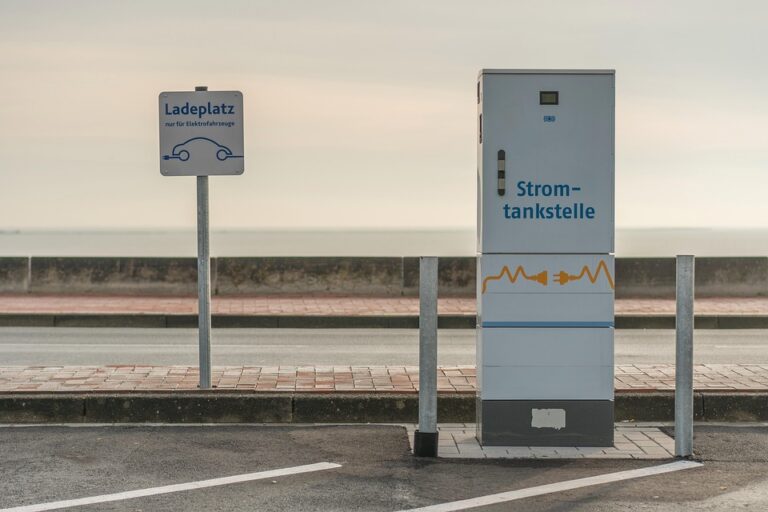The Future of Mobility: How Electric Charging Stations Are Revolutionizing Transportation
The future of transportation is shifting towards sustainability, and at the heart of this transformation are electric charging stations. With the global automotive industry experiencing a seismic shift from traditional combustion engines to electric vehicles (EVs), charging infrastructure plays a pivotal role in facilitating this transition. As cities worldwide invest in expanding their charging networks, understanding their impact on mobility becomes increasingly vital.
The Rise of Electric Vehicles
The surge in electric vehicle adoption can be attributed to several factors, including rising environmental consciousness, government incentives, and advancements in battery technology. For instance, as of 2023, electric vehicle sales have increased by over 60% in the past two years, showcasing the growing demand for cleaner alternatives to gas-powered cars. This growth inevitably places a greater emphasis on electric charging stations—necessary for a seamless EV experience.
Understanding Electric Charging Stations
Electric charging stations are critical infrastructure that provides electricity for electric vehicles. They vary in type, from common Level 1 chargers used in residential settings to high-speed Level 3 chargers that can recharge a vehicle in less than an hour.
- Level 1 Chargers: These are typically standard household outlets that provide a charging rate of approximately 4-5 miles per hour of charging.
- Level 2 Chargers: Found in public and residential charging stations, they offer a charging rate of about 25 miles of range per hour.
- DC Fast Chargers (Level 3): These stations use direct current to charge vehicles quickly, offering over 100 miles of range in approximately 30 minutes.
Searching for Solutions: The Growing Network
As electric vehicles become more common, the demand for electric charging stations increases. According to the International Energy Agency (IEA), the global number of publicly accessible charging stations exceeded 1.8 million in 2022, representing a 40% increase from the previous year. This expanding network is crucial for alleviating range anxiety, the fear that an electric vehicle will run out of power before reaching a charging station.
Real-World Example: The Role of Urban Planning
Cities like Amsterdam have embraced electric charging stations as an integral part of urban planning. By installing EV charging spots near popular locations and public transportation hubs, municipalities are encouraging their citizens to transition to electric mobility. This not only supports sustainability efforts but also promotes economic growth as these stations drive traffic to businesses.
The Economic Impact of Charging Infrastructure
The boom in electric charging stations is also creating jobs and opportunities. The Bureau of Labor Statistics (BLS) forecasts a 20% increase in jobs in the EV infrastructure sector over the next decade. Roles in installation, maintenance, and management of these stations will be in high demand as more companies invest in EV technologies.
- Investment Surge: In 2023 alone, over $2 billion has been allocated for the development of electric charging networks across the United States, with additional funding coming from both public and private sectors.
Environmental Considerations
Transitioning to electric vehicles and implementing charging stations align closely with global environmental goals. The reduction in greenhouse gas emissions is significant; a study from the Union of Concerned Scientists suggests that electric vehicles produce, on average, 50% fewer emissions than their gasoline counterparts over their lifetime. By facilitating widespread usage of electric charging stations, we can accelerate this vital shift towards cleaner transportation.
Challenges and the Road Ahead
Despite the optimistic outlook, the rapid growth of electric charging stations does face challenges. Some notable hurdles include:
- Infrastructure Gaps: Rural areas may still lack sufficient charging stations, making it difficult for residents to switch to EVs.
- Charging Speed: While advancements are being made, some users still find the time it takes to charge an electric vehicle cumbersome compared to refueling gasoline cars.
- Cost of Installation: For setting up charging stations, both initial costs and electricity access can be significant barriers.
Future Considerations
The future of electric charging stations will likely include innovative solutions to tackle these issues. For example, solar-powered charging stations can provide sustainable energy while minimizing costs. Similarly, collaborations between automakers and technology firms may lead to faster and more efficient charging methods, enhancing user experience.
Conclusion
The expansion of electric charging stations signifies more than just a technological shift; it’s a fundamental metamorphosis in how we perceive mobility. As we stand on the brink of this revolution, the future is undoubtedly bright for electric vehicles. While challenges remain, the trajectory towards a sustainable, efficient, and accessible transportation system appears set to soar.
For further reading on innovations in mobility, check out our articles on The Future of Autonomous Vehicles and Sustainable Transportation Trends.
For external insights, consider exploring International Energy Agency’s Annual Report for a deep dive into the statistics surrounding electric vehicles and charging infrastructures.
Images to Include:
-
Image of Electric Charging Station
Alt Text: Electric Charging Stations in an Urban Setting
- Image of Electric Vehicle Charging
Alt Text: An Electric Vehicle Connected to a Fast Electric Charging Station
In embracing electric charging stations, we are not just investing in infrastructure, but also in a sustainable future defined by cleaner air and advanced mobility options.


